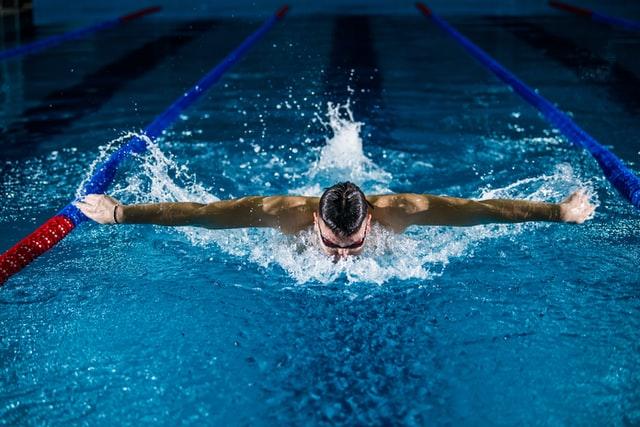
An Overview of Popular Swimming Strokes
Whether you’re learning to swim for exercise, competitions or safety reasons, it’s helpful to know a variety of swimming strokes and when to use them. This will allow you to be safe and competitive while using your energy appropriately. While there are many different types of swimming strokes, you’ll likely find yourself using these five techniques.
Front Crawl (or Freestyle Stroke)
The front crawl is what you see competitive swimmers do the most because it’s the fastest of the strokes. The reason why the front crawl is fast is because one arm is always pulling underwater and able to deliver a powerful propulsion. To be efficient with this swim stroke, time your breathing to match your swimming strokes.
Backstroke
The backstroke is unique because it’s the only stroke done on the back. It’s the third-fastest competitive swimming stroke – faster than the breaststroke but slower than the butterfly. Swimmers like this style because their breathing is not restricted. It’s also low impact – doctors often recommend this stroke to people with back problems.
Breaststroke
The front crawl is popular because it’s fast, but the breaststroke is the most popular swimming stroke of all. It is, however, the slowest competitive swimming stroke. That said, the breaststroke is great for beginners because it’s easy to learn and keeps your head out of the water.
Butterfly Stroke
The butterfly stroke is the second-most popular competitive swimming stroke because it’s fast, but it’s not easy to learn. This technique requires a lot of energy, so swimmers find themselves getting exhausted in a short time. However, the butterfly stroke is a lot of fun and was the favorite stroke for Olympic winner Michael Phelps.
Sidestroke
This swim technique is older and typically not used in swimming competitions, though it’s an important stroke to learn for safety purposes. The sidestroke is commonly used by lifeguards if they need to pull someone from the water. Like the backstroke, the head stays above the water and breathing is not restricted.
Learn Essential Swim Strokes at Into the Swim
While there are many different swimming strokes, these five are the most common and probably what you or your child will come across in swim lessons. All of these strokes are worth learning, even as a beginner. They’ll strengthen your arms, legs and core, build endurance and promote a safe swimming environment for yourself and those around you. To learn or improve these swim techniques, sign up for swimming lessons at Into the Swim.



